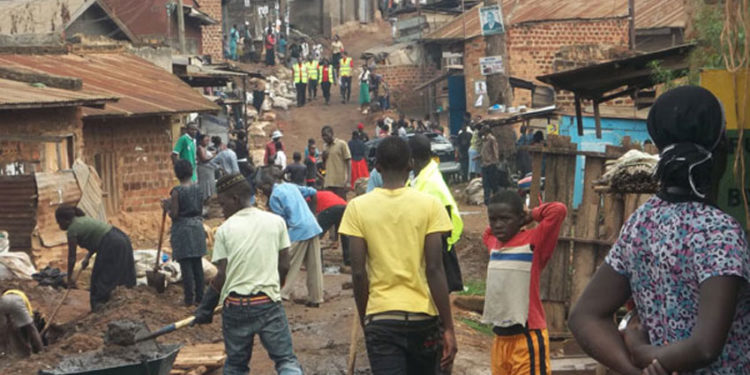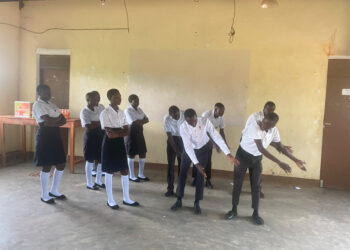The Ministry of Gender, Labour, and Social Development (MGLSD), in partnership with the Parliamentary Forum on Social Protection, is set to launch Social Protection Month 2024 this October under the theme Social Protection as an Enabler for Human Capital Development Across the Life Cycle.
The event arrives at a crucial moment, with statistics revealing that 20.3 per cent of Uganda’s population—approximately 8 million people—currently live below the poverty line, while 78 per cent are under the age of 30 but jobless.
While addressing journalists on Monday at Media Center, Emmanuel Ongiertho the Deputy Chairperson of Uganda Parliamentary Forum on Social Protection noted that as Uganda is grappling with significant socio-economic challenges, the country’s population growth rate of 3.2% exceeds the government’s capacity to provide essential services, including healthcare, education, and housing.
“The state’s capacity to deliver essential services as healthcare, education, housing and employment, thereby increasing the population’s exposure to poverty, risk and vulnerability. The current population growth, as stated, Uganda’s human capital remains underdeveloped with the human capital index indicating a low future potential for labour at 0.4 This suggests that children born in Uganda today are likely to be only 40 per cent as productive as they could be if they had access to complete education and full health care, the secondary school curriculum is considered too broad, while the vocational education curriculum is not dynamic enough to meet labour market demands,” he said.
Additionally, higher education lacks sufficient practical work-based training, resulting in employers spending considerable time and resources on reorienting, retooling and training new entrants to the job market
He also revealed that 37 per cent of children in Uganda experience multidimensional poverty, with 26 per cent stunted, 3 per cent wasted, and 10 per cent underweight. Only 10 per cent of children aged 6 to 23 months meet the minimum dietary requirements. Only 29 per cent of children aged 36 to 59 months attend early childhood education programs, contributing to Uganda’s low HCI score.
According to Ongiertho , Social protection coverage in Uganda remains one of the lowest in the region, at just 3.1 per cent of the population. Furthermore, only 0.3 per cent of Uganda’s GDP (excluding healthcare) is allocated to social protection—compared to Kenya’s 1.4 per cent, Tanzania’s 2.5 per cent, and Rwanda’s 1.3 per cent. “This funding shortfall has left millions of Ugandans exposed to poverty and vulnerability, particularly in the face of climate-related shocks, which affect 77 per cent of the population,” he said.
Meanwhile, the event will highlight programs designed to address these issues, including the Social Assistance Grants for Empowerment (SAGE) program, which supports over 306,796 older persons, and the Nutri-Cash Program, which provides nutrition assistance to 13,000 pregnant and lactating mothers in refugee-hosting areas.
He noted that expanding social protection provision in Uganda could become self-sustaining with increased government investment by 2030-2031. The impacts of such investment would result in higher household incomes, increased household consumption, and improved employment rates, which in turn would generate additional tax revenue. This revenue could be used to finance future cash transfers, reducing the need for reallocating funds from other sectors.
Do you have a story in your community or an opinion to share with us: Email us at editorial@watchdoguganda.com













